1 Introduction
While global scientific communities’ understanding and knowledge of human-to-human transmission of Covid-19 continues to unravel and evolve, the resurgence of community cases, local clusters and highly contagious variants demand for immediate and enhanced preventative and precautionary measures.

It is widely accepted that the virus spreads mainly when an infected person is in close range contact (typically 1m apart) with another. Transmissibility of this virus is dependent on the amount of viable virus found in respiratory droplets which are expelled from the nose or mouth when an infected person coughs, sneezes, sings, breathes heavily or talks.
Read also
Keeping Covid-19 away: A change of air needed
EdgeProp Malaysia championing the call for better indoor air and ventilation in buildings
Going back to the office …
Government’s Guidance Note on ventilation and IAQ
It is now known that smaller respiratory droplets expelled from an infected person could spread further through virus ‘aerosols’ inside crowded and/or inadequately-ventilated buildings.
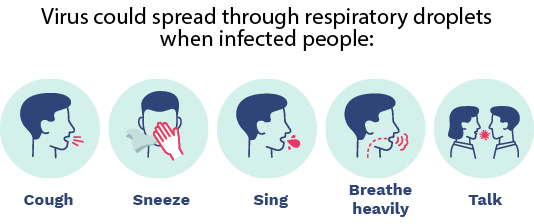
As the risk of catching Covid-19 is higher in confined spaces, it is critical to mitigate exposure to the virus and reduce the disease transmission by improving and enhancing the air quality and ventilation inside buildings.
This can be achieved with proper operations and maintenance of air-conditioning and mechanical ventilation systems.
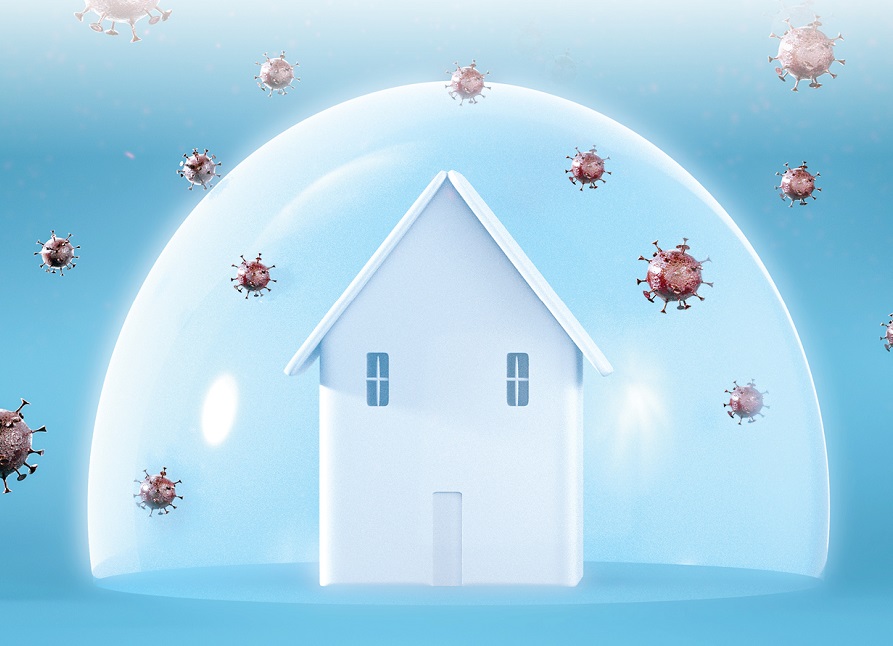
This GN provides the knowledge and understanding of building ventilation (naturally and/or mechanically) amid the pandemic and beyond.
The EdgeProp Malaysia's GN covers three (3) contextual building categories:
● Healthcare
● Residential
● Non-residential buildings

Each category takes into consideration the existing ventilation system/systems (mechanical or natural); and a framework in assessing the current condition(s) with practical recommendations for immediate and longer-term measures.
While the GN is directed mainly at builders, building owners, building manager, health care facility managers and members of the public who are providing home care facilities,
Occupants of residential homes are also recommended to:
● improve home ventilation by opening doors and windows (where possible and safe), especially when hosting non-household guests
● where applicable, fans can be used to promote air circulation
The decision on whether to use mechanical or natural ventilation should be based on:
● Needs
● Resource availability
● Cost of systems to provide the best control to counteract the risks
For new buildings, increasing ventilation and enhancing air exchanges must be part and parcel of the design.
However, there must be regular and proper maintenance and upkeep of all the mechanical initiatives to ensure quality air indoors.

2 Key information and benchmarks of EdgeProp Malaysia's GN
The recommendations in this GN should be implemented as complementary with and in addition to other measures to reduce disease transmission:
● This GN is not prescriptive or exhaustive. It is intended to assist building owners, building managers, health care facility managers and members of the public in making considered decisions and actions in addressing key concerns with indoor virus aerosol transmission
● This GN is not intended to cause a waiver, or modification but should be adapted to existing regulations frameworks, By-Laws of each State/Territory of Malaysia, and complementary with existing building condition, bylaws, house rules and ownership as well as the decision-making structure
● The recommended measures made in this GN are additional good practices based on the selected publications, applicable existing regulations in place and prevailing benchmarks (where available) derived from, among others the following documents:
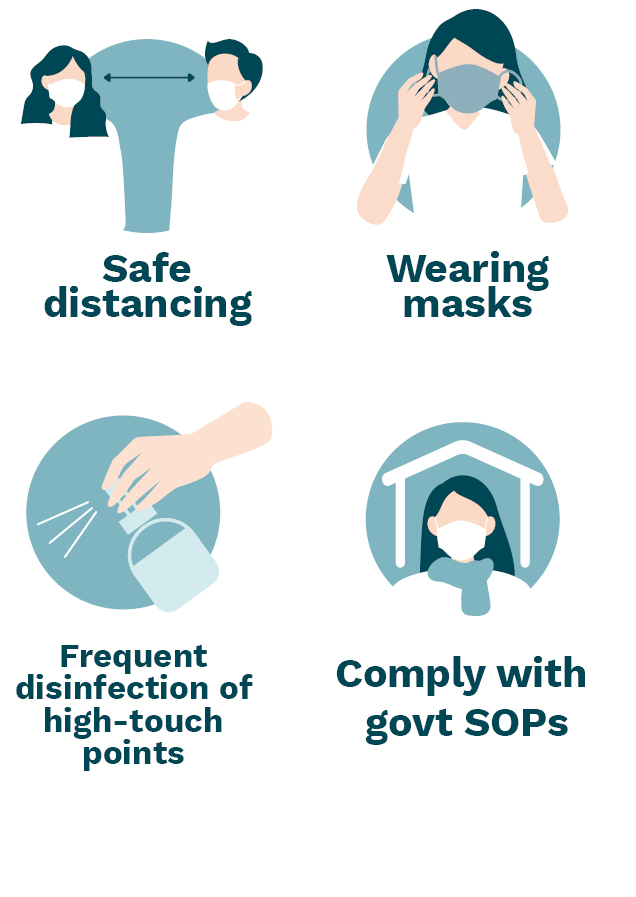
● Third Schedule of the Uniform Building By-Laws 1984, the set of subsidiary legislations made pursuant to Section 133 of the Street, Drainage and Building Act 1974, in the manner and form as enacted, adopted and adapted (with amendments) by the respective States and Territories of Malaysia
● Industry Code of Practice on Indoor Air Quality 2010 {JKKP DP (S) 127/379/4-9} issued by Department of Occupational Safety and Health of the Ministry of Human Resources Malaysia.
● ANSI/ASHRAE Standard 62.1-2019
● Roadmap to improve and ensure good indoor ventilation in the context of Covid-19 – 2021 from World Health Organization (WHO)
● Updated Guidance Note on Improving Ventilation and Indoor Air Quality In Buildings Amid The Covid-19 Situation from Building Construction Authority, National Environment Agency and Ministry of Health of Singapore – 25th May 2021
3 IAQ now a Must-Have. Not an Option
Indoor air quality (IAQ) tended to be overlooked as the air that we breathe in is often taken for granted.
Studies have shown that we spend an average of 90% of our time indoors such as our homes, workplaces, institutions, community halls, entertainment centres and air-conditioned vehicles.
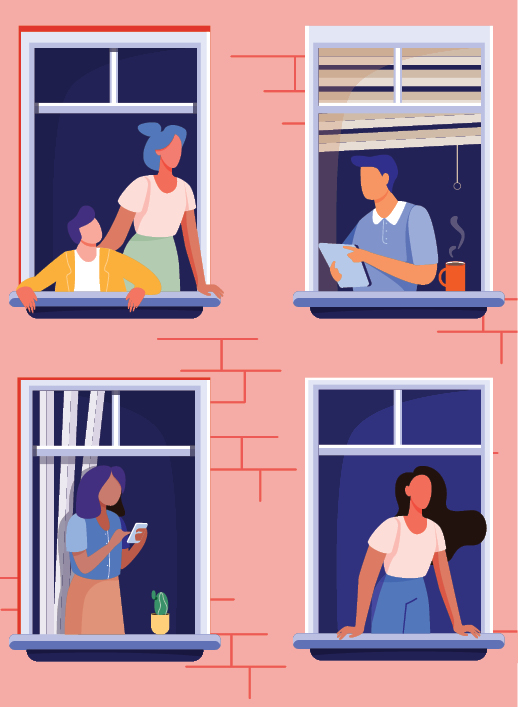
Every day we breathe in about 18kg to 19kg* of air. Poor IAQ could trigger health problems such as:
● Allergic reactions
● Respiratory problems
● Eye irritation
● Sinusitis
● Bronchitis
● Pneumonia
● And the infectious Covid-19 Coronavirus!
Coronavirus particles in the air in aerosolised form for up to 16 hours!
Good ventilation is a MUST!
Therefore, crisis preparedness and future proofing indoor spaces are not only non-negotiable but urgent as the Coronavirus continues to mutate.
A rethink on how to move outdoor fresh air into a building or a room and remove stale indoor air, ensuring the air in the building is healthy for breathing.
*According to Department of Occupational Health, National Institute of Public Health Japan
What is ventilation?
Ventilation moves outdoor air into a building or a room and distributes it within the building or room. The general purpose of ventilation in buildings is to ensure that air in the building is healthy for breathing. Where possible, open windows and doors as frequently as possible to introduce outdoor air into the occupied space.
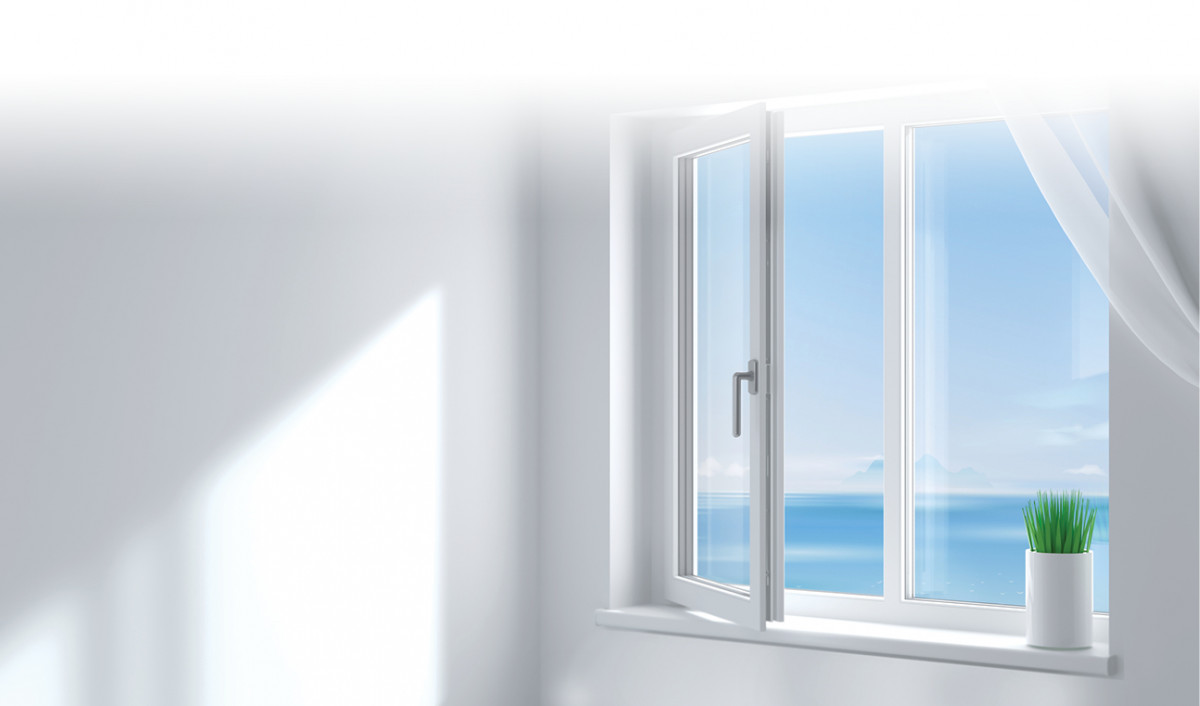
There is no one-size-fits-all solution in a multi-pronged approach to contain Covid-19. Tailored designs and practices are key for all buildings – old and new - to reduce the risk of indoor virus transmission as Malaysia transitions to the new normal.
4 Crisis Preparedness: Ideal vs Realistic
We appear to be dealing with a moving target in the war against the virus as the science of the virus transmission is still relatively unknown. Up to this point, no silver bullet is within sight.
Add to this, natural ventilation is weather and environment dependent. Under the circumstances, ventilation guidelines to counter the virus threat tended to be transient.

EdgeProp Malaysia's GN provides a reference procedure for improvement of indoor air quality for building operators and homeowners during this pandemic period.
Challenges:
The implementation of IAQ guidelines is expansive, costly and neither realistic nor practical.
Resolution:
Greater awareness on the importance of IAQ and implement good ventilation guidelines.
Some knowledge in building and heating, ventilation, and air conditioning (HVAC) operation is required, but not essential, to understand the recommendations.
5 New and Existing Buildings
Commercial, non-commercial and specific use of new buildings:
● Building design, construction and management must take cognisant of the need to be Covid-19-proof
● Use of sensors and systems to monitor outdoor air quality

● Use of exhaust / fresh air supply system for unidirectional airflow in poorly ventilated spaces
● Encourage of cross-ventilation design
● Open windows and doors to enhance air exchange
● Allocate space for convertible self-quarantine purpose
● In-built air purifiers in all lifts, pantries and places of worship in workplaces
Commercial, non-commercial and specific use existing buildings:
● Immediate solution lies in mitigation of inherited building and systems

● Interim solution - use of high-efficiency air filter but it does not replace the need for adequate ventilation
● Regular surfacing cleaning and disinfection
● Make sure no undesired air leakage into occupied spaces
6 Mechanical Ventilation
Adequacy of fresh outdoor air is a main source of concern in tight and opaque buildings. Indoor space in these buildings is usually devoid of sufficient fresh air from the outdoor.
The way fresh air outdoor is introduced into the interior space differs; it is dependent on the type of air-conditioning and ventilation systems installed.
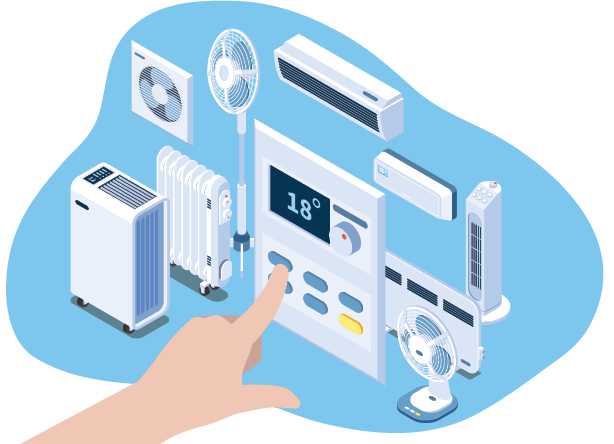
Suggestions to improve indoor air movement:
● Dilute infectious virus aerosols with fresh air is the backbone in reducing the spread of most pathogens
● Measure indoor carbon dioxide (CO2) concentration periodically
● Upgrade of filtration system to WHO’s recommended MERV 14 filter
● Confined space served by split air-con unit without fresh air flow should not be occupied, or installing stand-alone air cleaner with HEPA is recommended
● Stand-alone air cleaners should be operated continuously
● If engineered sizing of air cleaner is not possible, consider a rule-of-thumb air flow capacity of 5ACH
● Conduct pre-occupancy purge of interior space with fresh air two hours prior to the arrival of occupants
● Evaluate building systems in consultations from time to time
DO YOU KNOW? Fresh air can be introduced from dedicated air handling plants and distributed in the supply air duct in a centralised system, such as an independent unitary split air-conditioning system.
Note: Feature not regularly available in independent unitary split AC systems commonly installed in residential homes and offices in shop lots.
Improving indoor air movement
Fresh air from the outside may be affected by local conditions for example, environmental pollutants, smog or haze. Treatment of the air may be required.
Installation of exhaust fans to extract the internal air out, creating internal low pressure for external fresh air to come into the indoor space.

Confined spaces served by split air-conditioning units without (or inadequate) external windows, or fresh air ducts.
At best, these spaces should not be occupied. If unavoidable, the installation of stand-alone air cleaner with High Efficiency Particulate Air (HEPA) filter is recommended.
Note: Stand-alone air cleaners do not replace ventilation in any circumstance.
A measurable carbon dioxide (CO2) exhaled by occupants can determine the recommended safe occupation limit of an indoor space.
The installation of portable handheld CO2 sensor is a convenient method to measure the indoor concentration.
Reduce total number of occupants if exceed the maximum recommended concentration of indoor CO2 of 1,000 parts per million (ppm).
7 Non-Residential Buildings with Central Air-Conditioning
Proper operation and maintenance of air-conditioning system.
Daily measurement is recommended and should not breach these criteria:
Indoor temperature: 22 oC – 26 oC
Indoor relative humidity: 50% – 70%
Maximum CO2 concentration:
1000 ppm

Where possible, purge the interior space with outdoor air two hours before daily occupancy.
If not, operate the air-conditioning system with outdoor air intake dampers at fully opened position for two hours prior to daily occupancy. The outdoor air fan shall be operated at the rated capacity.
In-built air purifiers inside every lift, pantries and places of worship in workplaces should be considered.
Replace existing recirculated air filter with MERV 14 (as recommended by WHO) or better.
Consider portable air cleaner (MERV 14 or better) if replacement.
What to do when CO2 concentration exceeds 1000 ppm, or when measurement is not possible to be conducted:
Central System with CO2 Demand Controlled Ventilation
By-pass the CO2 system controls and open the outdoor air dampers fully. Operate the outdoor air fan at its rated speed – can be executed at the Building Management System workstation.
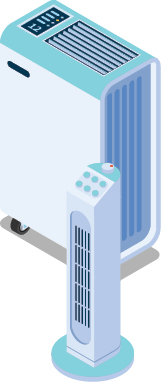
Central System without CO2 Demand Controlled Ventilation
Manually open the outdoor air dampers fully. Operate the outdoor air fan at its rated capacity.
Central System without Outdoor Air Supply
Manually open any windows (if safe to do so). Introduction of in-room HEPA type portable air cleaner is recommended if opening of windows is unsafe or not possible.
* Filter to be sized according to the numbers of occupants and the area of the occupied space.
Operate toilet exhaust system during occupied hours.
Review air filter capacity
● Minimum of MERV 14 (as per WHO recommendations)
● If condition cannot be met:
-Replace existing filter with MERV 14 or better
-Install MERV 14 portable air cleaner or better
-Install a portable in room HEPA type air cleaner (for room without outdoor air)

Pre-occupancy air purge
● Purge the interior space with outdoor air two hours before daily occupancy
● When purging is not possible: Operate the air-conditioning system with outdoor air intake dampers at fully opened position for two hours before daily occupancy. The outdoor air fan shall be operated at the rated capacity
For selected hotel rooms used for Covid-19 quarantine
Consider using natural ventilation where possible – when environmental conditions and building requirements allow – and if it is safe to do so.
If air-conditioning systems are used, increase flow of fresh air supply.
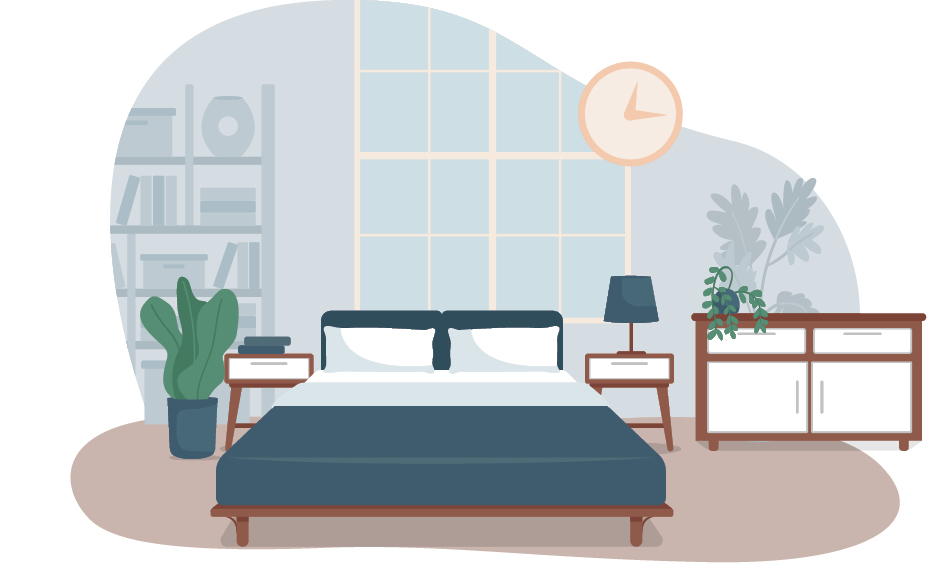
Verify compatibility of the system capabilities for both temperature and humidity control as well as its compatibility with outdoor/indoor air quality considerations
Maintain, clean and inspect the HVAC systems regularly.
Monitor the condition of filters and, if possible, increasing the central air filtration (minimum MERV 14) without significantly diminishing design airflow.
Food & Beverage Establishments with Enclosed Dining Facilities (At locations where masks are not worn during meals/drinks)
If possible, open all external windows even when the air-conditioning system is in operation.
Consider installing portable air cleaner with HEPA filters in the space.
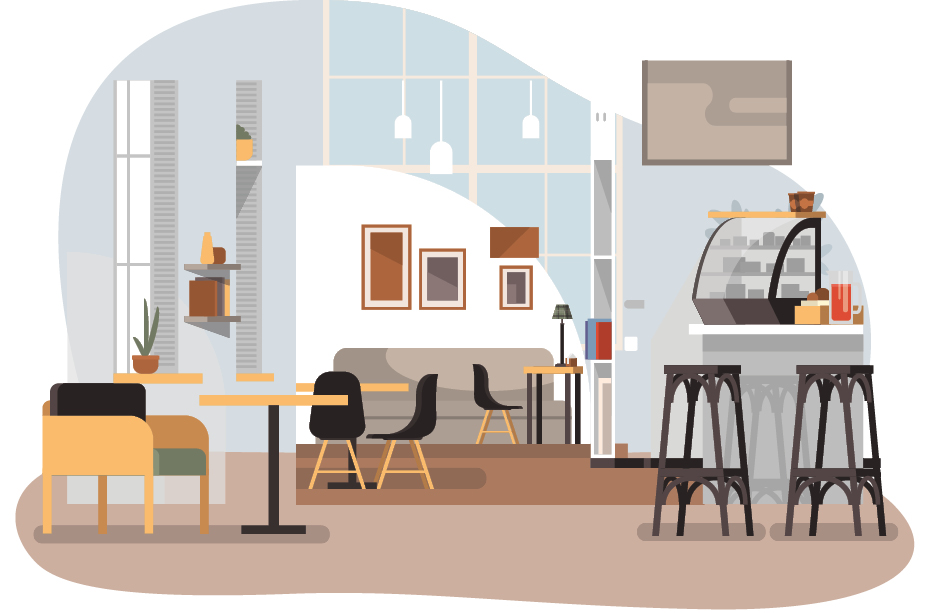
Dining tables shall preferably be sited at outdoors (alfresco) or in a naturally ventilated area with cross flow ventilation.
Arrange the seating location in a manner to avoid direct supply air flow from the diffuser or fan coil unit.
Locating several patrons in the direct line of supply air risk infecting those sitting at the downstream of the flow if an infected patron is on the upstream.
8 Residential buildings/landed property with split unit air-conditioning (condominiums, landed homes, detached structures, shophouses)
Let’s start at home -- the same can be applied to other indoor spaces as well, where permissible.
Air supply and exhaust/fresh system can be aligned to provide unidirectional airflow in poorly ventilated space.
e.g. Place a fan towards the window to create a breeze (if only one window in the room).
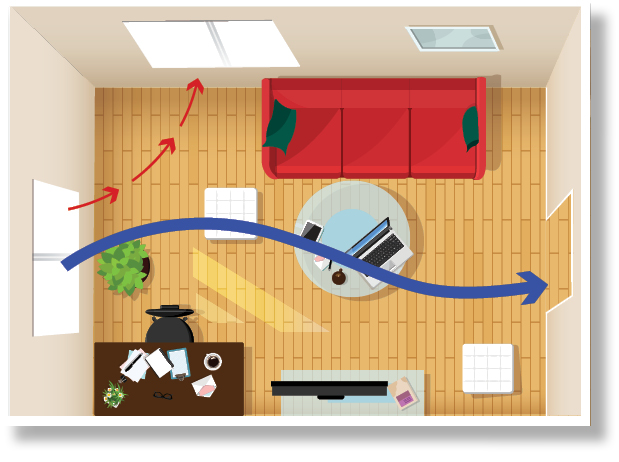
Highlight: Cross-ventilation is significantly more effective than single-sided ventilation.
Bad example: Opening two windows positioned closely to each other will prevent air from flowing through the entire room.
All air-conditioning system must be properly maintained with scheduled inspections and servicing. Ensure filters are thoroughly cleaned with regular inspection.
The use of air-conditioning should be reduced or turned off when doors and/or windows are opened.
Note: Do not open windows or doors if the air quality of the outdoor air is poor (e.g., odour, contaminated etc). Install a portable HEPA air cleaner instead.
9 High risk spaces: residential property with self-quarantined occupant(s) (condominiums, apartments, landed homes)
Preferably negatively pressurised with airflow in one direction from clean (safe) area to dirty (unsafe) area. If possible, install an exhaust fan to the external while ensuring the negative flow.
For high-rise, identify an isolated space preferably with external windows and which can be cross-ventilated.
If cross-ventilation is not possible, identify a room with window(s).
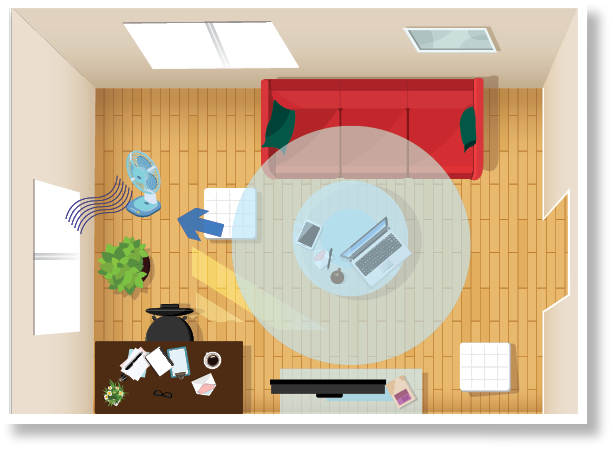
If isolation room is attached to another room (landed homes), consider installing a portable HEPA filter in BOTH the isolation room and the occupied space NEXT to the isolation room.
Air supply and exhaust/fresh system can be aligned to provide unidirectional airflow in poorly ventilated space.
e.g., Place a fan towards the window (if only one window) or opened door to create a breeze.
Isolation room - Consider the provision for a space that can be appropriately converted for self-quarantined purposes should the need arises.

This story first appeared in the EdgeProp.my E-weekly on Aug 13, 2021. You can access back issues here.
Get the latest news @ www.EdgeProp.my
Subscribe to our Telegram channel for the latest stories and updates






